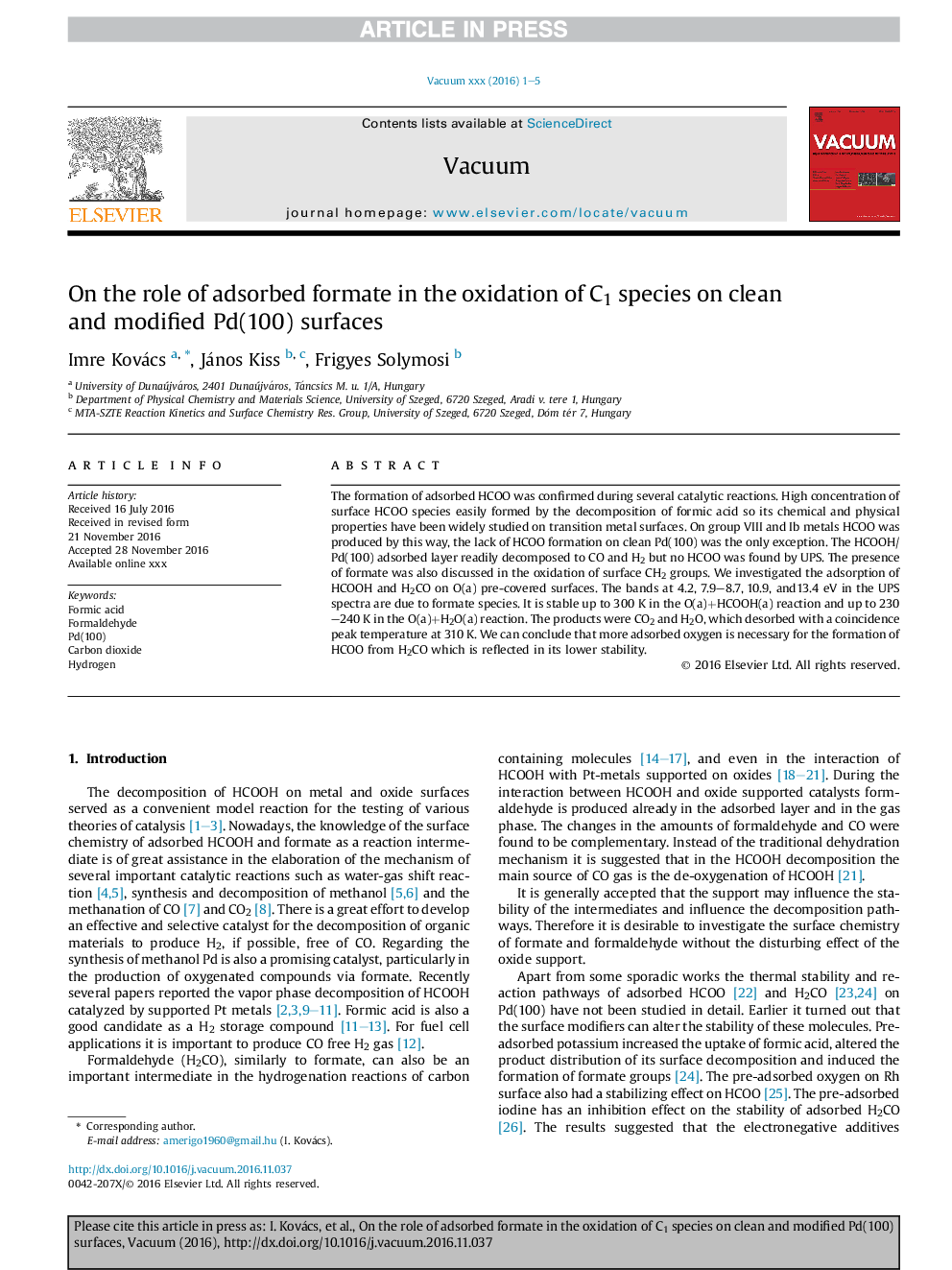| Article ID | Journal | Published Year | Pages | File Type |
|---|---|---|---|---|
| 5468334 | Vacuum | 2017 | 5 Pages |
Abstract
The formation of adsorbed HCOO was confirmed during several catalytic reactions. High concentration of surface HCOO species easily formed by the decomposition of formic acid so its chemical and physical properties have been widely studied on transition metal surfaces. On group VIII and Ib metals HCOO was produced by this way, the lack of HCOO formation on clean Pd(100) was the only exception. The HCOOH/Pd(100) adsorbed layer readily decomposed to CO and H2 but no HCOO was found by UPS. The presence of formate was also discussed in the oxidation of surface CH2 groups. We investigated the adsorption of HCOOH and H2CO on O(a) pre-covered surfaces. The bands at 4.2, 7.9-8.7, 10.9, and13.4Â eV in the UPS spectra are due to formate species. It is stable up to 300Â K in the O(a)+HCOOH(a) reaction and up to 230-240Â K in the O(a)+H2O(a) reaction. The products were CO2 and H2O, which desorbed with a coincidence peak temperature at 310Â K. We can conclude that more adsorbed oxygen is necessary for the formation of HCOO from H2CO which is reflected in its lower stability.
Related Topics
Physical Sciences and Engineering
Materials Science
Surfaces, Coatings and Films
Authors
Imre Kovács, János Kiss, Frigyes Solymosi,
